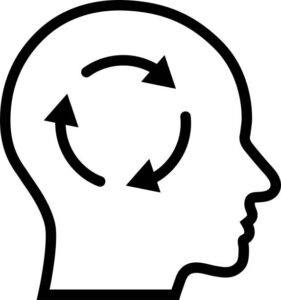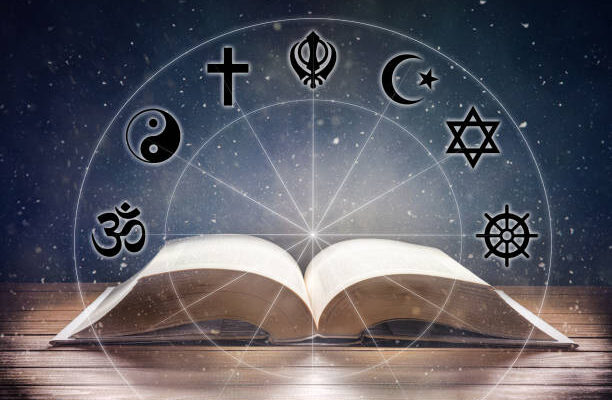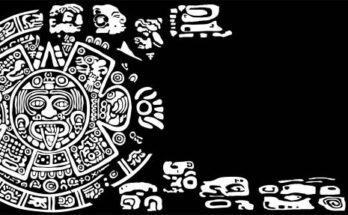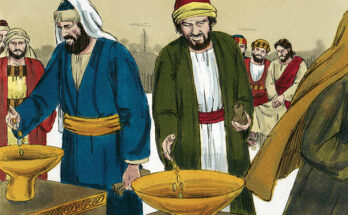Religion, as a complex and deeply ingrained aspect of human culture, often relies on symbolism to convey its profound messages, teachings, and rituals. Symbolism serves as a bridge between the tangible and the intangible, providing a visual, auditory, or tactile language that allows believers to connect with the divine and understand the mysteries of existence. This article explores the dynamic and active role of symbolism in religion, delving into how symbols become vessels of meaning, fostering a deeper understanding of faith, and creating a shared identity among believers.
The Language of the Ineffable
 (Photo from iStock)
(Photo from iStock)
One of the fundamental challenges of religious discourse is the attempt to articulate the ineffable—the aspects of the divine that transcend human comprehension. Symbolism, in its various forms, steps into this gap, offering a language that communicates the transcendent and the sacred.
Take, for example, the Christian symbol of the cross. Beyond being a simple geometric shape, the cross embodies the central tenet of Christianity—the crucifixion and resurrection of Jesus Christ. It encapsulates the narrative of salvation, redemption, and divine love, transcending linguistic boundaries to resonate with believers worldwide.
Facilitating Spiritual Experience
Symbols not only convey religious concepts but also actively participate in the creation of a sacred space and the facilitation of spiritual experiences. Architecture, art, and ritual objects within religious contexts are often laden with symbolic meaning, transforming the physical environment into a conduit for the divine. Consider the awe-inspiring architecture of cathedrals, mosques, or temples, where every arch, window, and ornament carries symbolic significance, guiding worshippers toward a heightened state of spiritual awareness.
Cultural Identity and Communal Unity
Symbols play a pivotal role in shaping the cultural identity of religious communities. They act as emblems that distinguish one faith tradition from another, fostering a sense of belonging and unity among believers. The crescent moon and star in Islam, the lotus flower in Hinduism, or the menorah in Judaism are not mere icons; they are symbols that encapsulate the history, values, and shared identity of entire religious communities.
Moreover, symbols serve as markers of continuity across generations, carrying the weight of tradition into the present. The celebration of religious festivals, adorned with symbols and rituals, becomes a collective reaffirmation of cultural identity. In this way, symbolism actively contributes to the formation and preservation of religious communities, providing a visual and symbolic language that transcends the limitations of spoken or written words.
Moral and Ethical Guidance
 (Photo from iStock)
(Photo from iStock)
Religious symbols often encapsulate moral and ethical teachings, serving as visual reminders of the principles that guide believers in their daily lives. For instance, the Buddha’s wheel in Buddhism represents the Noble Eightfold Path, a guide to ethical and mental development. The menorah in Judaism embodies the ethical imperatives outlined in the Torah, serving as a constant visual cue for righteous living.
By embedding moral teachings in symbols, religions actively engage believers in a continuous dialogue with their ethical responsibilities. These symbols serve as moral compasses, prompting individuals to reflect on their actions and choices in light of their religious values. In this way, symbolism is not passive but actively influences the ethical framework within religious communities, shaping individual and collective behaviour.
Navigating the Journey of Faith
Symbols often play a crucial role in guiding believers on their spiritual journeys. The labyrinth, a symbol found in various religious traditions, represents the winding path of life’s journey with its twists and turns. Pilgrimages, adorned with symbolic markers and rituals, serve as transformative experiences that deepen the connection between the individual and the divine.
In Christianity, the fish symbol (ichthys) not only represents Christ but also serves as a clandestine identifier for early Christians. This discreet symbol helped believers navigate times of persecution and identify fellow members of their faith. Thus, symbolism actively aids believers in navigating the complexities of their spiritual journeys. Providing guidance, strength, and a sense of purpose.
Universal Archetypes and Shared Meaning
Symbols often tap into universal archetypes, transcending cultural and linguistic barriers to convey shared meanings. The tree of life, a symbol found in various cultures and religions, represents interconnectedness, growth, and the cycle of life. By drawing on these archetypal symbols. Religions create a shared reservoir of meaning that resonates across diverse cultural and geographical contexts.
The active role of symbolism in fostering shared meaning is particularly evident in religious rituals. Whether it’s the lighting of candles, the use of incense. Or the act of prayer, these rituals are laden with symbolic significance. That unites believers in a shared language of worship. Symbols, therefore, actively contribute to the creation of a global community of faith. Where individuals from different backgrounds can find common ground in the shared meanings embedded in religious symbolism.
Dynamic Adaptation and Evolution
 (Photo from iStock)
(Photo from iStock)
While religious symbols often carry ancient meanings, they are not static entities. Symbols have the capacity to adapt and evolve, responding to the changing needs and understandings of religious communities. The Virgin Mary, for example, has been depicted in countless ways across different cultures. And periods, adapting to the aesthetic sensibilities and theological nuances of each era.
Challenges and Controversies
Despite the profound role of symbolism in religion, it is not immune to challenges and controversies. Symbols can be misappropriated, misinterpreted, or weaponized to serve political, social, or exclusionary agendas. The Star of David, for instance, has been used to stigmatize and discriminate against Jewish communities throughout history. The active role of symbolism in shaping religious identity can, at times, become a source of division rather than unity.
Conclusion
In conclusion, the role of symbolism in religion is far from passive. Instead, it is a dynamic and active force that shapes. The very fabric of religious experience, community identity, and ethical guidance. From facilitating spiritual encounters to embodying cultural identity. Symbols serve as conduits between the finite and the infinite, the tangible and the transcendent. As we navigate the complexities of the 21st century. The active role of symbolism in religion continues to evolve, contributing to the rich tapestry of human spirituality and cultural expression.




